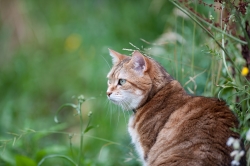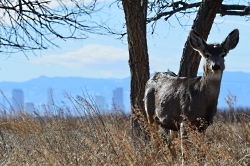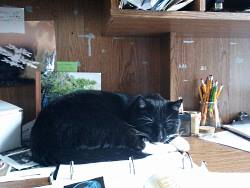
Courtesy Pixabay
Genocre, photographer
Nature perseveres in even the most built environment. The cycle of life continues, in our parks, our backyards, and the green spaces in between. Hawks hunt for rodents, rodents forage for seeds, and both seek out mates, no matter how temporary.
We rarely pause to consider how the ‘wildlife’ we bring with us impacts the natural world around us. Our dogs, from stoic german shepherds to the fluffiest toy poodle, are descended from wolves. Our cats, distant relatives of the middle eastern wildcat, are arguably semi-domesticated, after only 12,000 years of human intervention. Perhaps in another 12,000 years the common house cat will be as perky and eager to please as the average golden retriever, but I doubt it.
No matter how loving, our pets are descendants of great predators and they have the ability to negatively impact the fragile ecological balance that persists around us. Some simple commitments allow us to continue to coexist. First, spay and neuter your pets. Unplanned litters contribute to animal shelter crowding and stray populations. Intact pets are also more likely to roam, and to disturb and harm wildlife.
Second, maintain control of your pets at all times. It may be adorable to watch your fox terrier romp unhindered through an urban park, but she is potentially searching for rodent burrows and bird nests to demolish with glee. Your cat is a fierce predator, with the unfair advantage of a delicious and reliable supply of cat food. The ready flow of calories you provide gives fluffy the energy to hunt with enthusiasm. Keep your dogs on a leash or under voice control and your cats indoors. If your feline demands fresh air, consider building her an enclosed catio. Generations of demanding cats have ensured that the internet contains instructions for easy and affordable catio construction.
And last, take a moment to observe and appreciate the vibrancy of life around you. All around your home, animals are hunting, eating, breeding, and dying. Nature has found a way, and we all have responsibility to respect and protect our local natural ecosystems and the essential biodiversity that relies on the interconnectedness of all it’s parts.
I’m Stacey Frisk with the Cache Humane Society and I’m Wild About Utah!
Credits:
Images: Courtesy Pixabay, genocre collection, https://pixabay.com/photos/cat-feline-animal-animals-pet-825365/
Audio: Courtesy & © Kevin Colver https://wildstore.wildsanctuary.com/
Text: Stacey Frisk, Director, Cache Humane Society, https://www.cachehumane.org/
Included Links: Hilary Shughart & Lyle Bingham, Webmaster, WildAboutUtah.org
Additional Reading
Catio Spaces, https://catiospaces.com/
2020/2021 Bridgerland Audubon/Cache Humane Society Feline Fix Project https://bridgerlandaudubon.org/cache-humane-society-feline-fix-fundraiser/
Cats Indoors, Bridgerland Audubon Society, https://bridgerlandaudubon.org/cats-inside/
How cat advocates can allocate time and other resources for the biggest impact, Bays, Danielle Jo, Animal Sheltering magazine, Humane Society of the US, Winter 2018-2019, https://humanepro.org/magazine/articles/pointing-way-pyramid

Graphic by Patrick Ormsby/The Humane Society of the United States
Cache Humane Society, https://www.cachehumane.org/


